Homeowners sometimes believe that if they just let the grass grow on its own, it would eventually generate a full and lush lawn all by itself. But, sadly, this is never the case. Instead, certain actions need to be taken for obtaining the uniformly full appearance you desire. I mean, we all want a bright green lawn, don’t we? Let’s talk about aeration and overseeding.
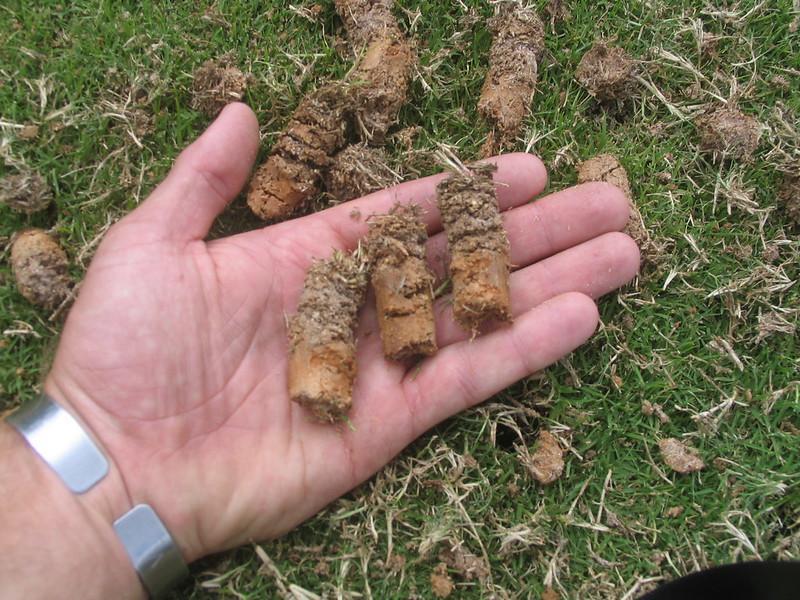
Aerating & overseeding can significantly reduce brown patches and bare spots on your lawn.
For many individuals, lawn care just means performing routine maintenance tasks such as mowing, watering, picking weeds, and applying fertilizer. Although those are essential components of a good lawn care plan, they are not enough.
The particular lawn care formula lacks aeration and overseeding. It is what makes your neighbor’s lawn stand out from yours and why their lawn always looks fabulous while yours is beginning to seem patchy, brown, and less than spectacular.
You can give your grass a new lease on life by aerating and overseeding it or punching holes in the ground and planting new seeds. In fact, if you want to revitalize and fortify your lawn, one of the most effective things you can do is to perform core aeration and overseeding in the correct manner.
However, a lot of individuals are skeptical about whether or not aeration and overseeding actually work. Well, the answer is yes! Even if your lawn does not need to be overseeded, it is still a good idea to include core aeration as part of regular lawn care.
So, let’s try to make sense of it all, so you realize why these activities are important.
More About Aeration
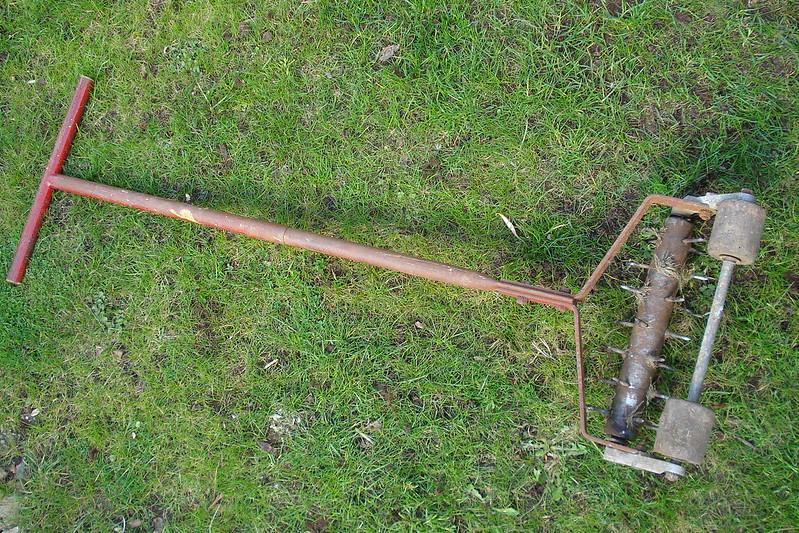
Aerated lawns are less prone to illness and thatch development over time.
Simple, regular maintenance tasks contribute significantly to a thicker and healthier lawn. However, tasks that are commonly reserved for once a year can nevertheless play an important role in supporting incremental improvements made to a lawn over the year. Aerating the lawn is an example of one of these kinds of jobs.
The basic premise behind lawn aeration is that your grass and the soil beneath it, like you, need to breathe. Growing thick, deep, and robust grass requires air, water, and nutrients.
Even light compaction of the soil can impede the flow of these elements. Also, in grassy areas that are subjected to continual foot traffic (or, even worse, car traffic), lawn aeration is required more frequently than in grassy areas that are out of the way.
Aerating a lawn involves puncturing the soil with tiny holes to increase the amount of oxygen and water that reaches the grassroots. This encourages the roots to develop more deeply, which results in a more robust and vibrant law. There are two primary aerating tools: the spike and the plug aerator.
We will discuss more aeration as we move on in this article.
RELATED: What Is The Best Grass Seed For Overseeding A Lawn? Our Top 10 Picks
More About Overseeding
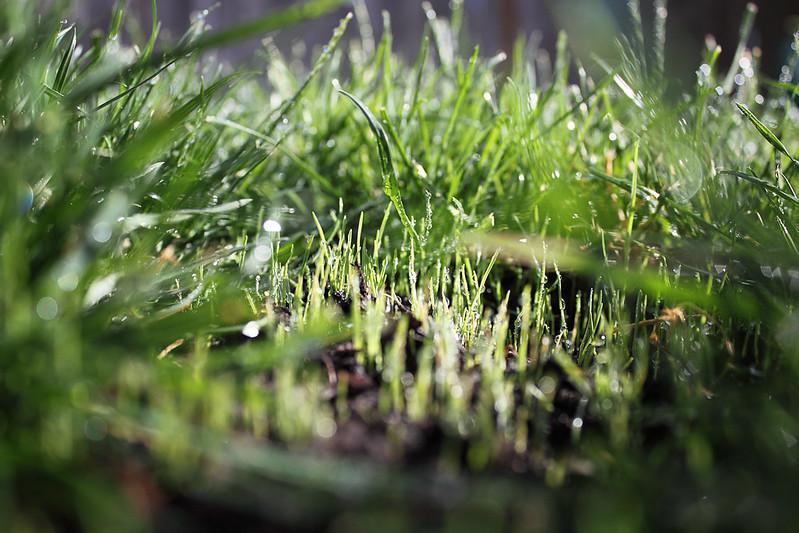
The process of putting new grass seed over an existing lawn is known as overseeding.
It is natural for grasses to thin out as they mature, and this is especially true if you stay on top of your lawn and use it frequently. Overseeding, when combined with a comprehensive, proactive plan, keeps lawns looking full and green.
When everything is in order, it’s a straightforward process that yields results. The fundamentals of overseeding are the same in every location; however, the goals and timing of the process change depending on the region and the type of grass that is being grown.
In general, overseeding helps prevent the growth of weeds and moss, enhances the color of the grass, and fills in damaged, bare spots and thin, worn parts to give your lawn a denser and thicker appearance.
Depending on the type of grass, some yards might need overseeding once a year if there is a threat of drought or disease to the grass, while other yards might need it every few years only to keep the grass full.
To overseed an existing lawn, you will first need to prepare the soil, spread the seed, and then tend to the new seedlings as they grow. In this article, we will take you step by step through the process of overseeding your lawn correctly.
Aerating & Overseeding A Lawn Together
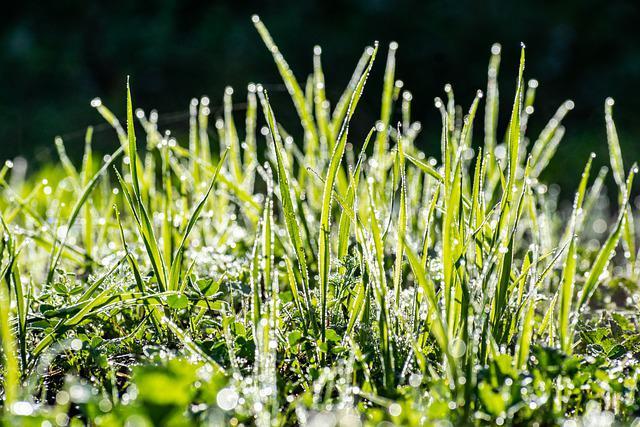
The seed will have the best chance of taking root in the soil if it is oversown 48 hours after aeration.
Although aeration and overseeding are two distinct methods that can be used to enhance your turf, they can (and should) be combined to produce a lush and healthy yard. Aeration and overseeding should be done on a routine basis in each yard.
When hiring a professional to undertake lawn aeration, the service is often performed in conjunction with overseeding. When core aeration is followed immediately by overseeding, the new grass seed has the opportunity to make excellent contact with the soil as it falls into the holes that were created in the turf.
Aeration and overseeding can work together to make the yard more beautiful and enjoyable. In addition to this, they promote better seed germination, which in turn makes your grass stronger and more resistant.
RELATED: How To Overseed A Lawn Without Aerating? A Comprehensive Guide
Best Time To Aerate A Lawn
Aerating your lawn is not something that should be done as part of the regular lawn upkeep. Lawns benefit from aeration, but if done at the wrong time of year, it can be stressful and damaging to the grass. It may even lead to disease and pest problems.
Just like major lawn projects, to get the best results from aerating your grass, you should do so during a time in which your grass is at the height of its natural growth potential. That is why you should never aerate your lawns during their dormancy.
So, instead of actively aerating your lawn, you should look for signs of compacted soil, uneven growth, thin or dead spots, discolored patches, or thatch development on the grass. Any of these signs could indicate the need to aerate.
Aerating Warm-Season Grasses
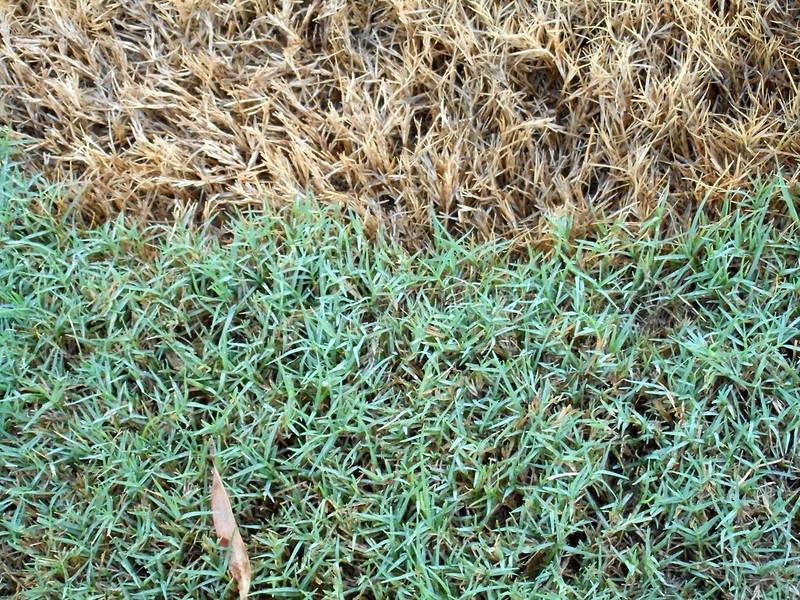
Aerate a Bermuda grass lawn between April and July when the grass grows quickly.
Warm-season grasses reach their maximum output during June and September when daily air temperatures reach highs of between 80 and 95 degrees Fahrenheit, and nighttime air temperatures remain around 72 degrees Fahrenheit.
Therefore, the optimal time to aerate warm-season grass lawns is typically in spring or the beginning of summer. Buffalo grass, St. Augustine grass, and Bermuda grass are some examples of grasses that thrive in warm climates. These grasses are widely used in the Deep South, as well as the lower Southwest and Southeast.
Aerating Cool-Season Grasses
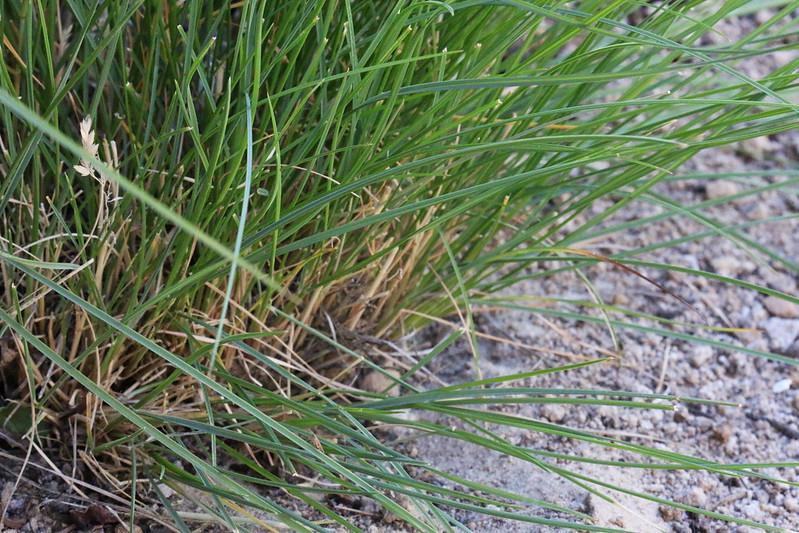
Early September is the ideal time of year to aerate a Kentucky bluegrass lawn before fertilizing.
A cool-season grass has a longer growing season, commencing in the spring and continuing until the late fall. Cool-season grasses experience the most growth when daily air temperatures are between 60 and 75 degrees Fahrenheit and nighttime air temperatures remain around 50 to 55 degrees Fahrenheit.
Therefore, the best time to aerate a warm-season grass lawn is typically in the early spring or fall. Fescue grass, Ryegrass, and Kentucky bluegrass are a few common examples of cool-season grasses. They are commonly grown in regions that experience moderate summers, such as the upper midwest, upper great plains, etc.
Best Time To Overseed A Lawn
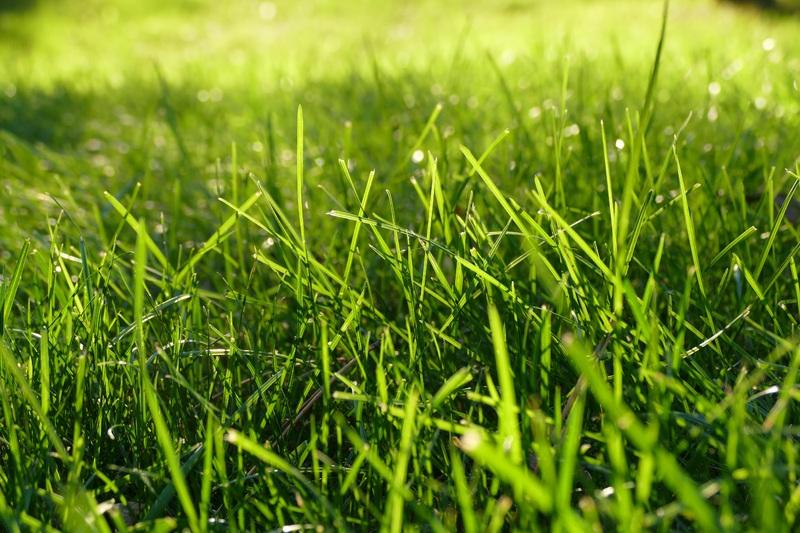
Warm-season grasses turn brown in the cold, so you can overseed them with cool-season grass.
No lawn is not immune to the natural elements that create wear and tear over time. A lawn will eventually get more sparse, with gaps throughout its length. Overseeding your worn-out grass might provide it with a much-needed facelift.
Consider it a hardware upgrade for your grass. In addition, the process of overseeding can be beneficial for many older lawns. For instance, the addition of fresh seeds to your yard will result in improvements to both its appearance and its performance.
The type of seed determines the optimal time to overseed your grass. The optimum time of year to overseed the turf is typically the spring, as this is when most grass species are active. You can sow seed in the early fall if you are overseeding for winter coverage; however, this strategy calls for great attention to detail.
Most grasses require a germination temperature ranging from 59 to 77 degrees Fahrenheit. Also, do not sow seeds when significant frost or snowfall is anticipated.
Overseeding Warm-Season Grasses
Warm season grasses are best planted in late spring through summer when soil temperatures exceed 65F. In addition, you need to fertilize your warm-season lawn one month before the onset of the first frost, which often occurs in early October.
One more thing to remember when overseeding a warm-season lawn is that moisture is frequently the limiting factor during fall seeding. Therefore, soil moisture conditions may decide when planting should take place.
Overseeding Cool-Season Grasses
If your lawn is made mainly of cool-season grasses, it may suffer from the summer heat. After all, by their very nature, these grasses favor the milder conditions that prevail in the spring and the fall. To get the best results from overseeding cool-season grasses, wait until late August or early September and then overseed your lawn.
Although it may still be somewhat warm, temperatures will swiftly begin to cool as the number of daylight hours continues to decrease. All in all, the fall is the best time to overseed lawns, as this provides the grass a jump start on the growing season.
Side Note: Aerating a lawn should be avoided during times of excessive heat or drought since creating holes in the ground during this time can cause the soil to become more exposed to heat, which can cause your grass to become even drier.
Always aerate based on what you see in your yard rather than going by a date on the calendar, as the ideal time of year to overseed and aerate lawns will also vary depending on the weather.
Aerate Your Lawn Before You Overseed
The ideal time to overseed is immediately after aerating the soil. After aeration, the soil has revitalized, and thatch that could prevent nutrients from penetrating to the new roots has either been minimized or eliminated entirely.
In general, the best approach is to overseed the area 48 hours after aerating it. This will offer the seed the best opportunity of establishing in the soil. Aerating the lawn before overseeding will also solve issues like thinning etc.
RELATED: Spike Vs. Plug Aerator | Which Is The Best & Which You Should Use?
Lawn Aeration Machinery
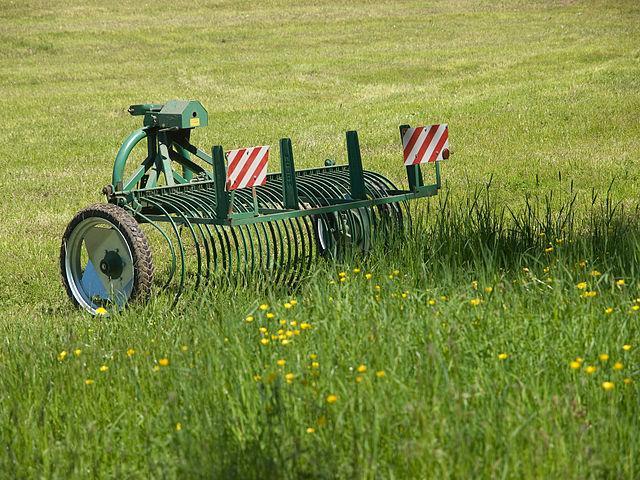
You can’t aerate your grass properly without equipment, especially if it’s a vast stretch of turf.
Although you can aerate your lawn using your hands, it is time-consuming and tedious. And this is where lawn aerator machines come in. In general, there are a total of three types of lawn aerating machines which are:
Plug/Core Aerators
Core aeration is accomplished by inserting hollow tines into the ground and removing small plugs of soil. It’s the preferred method for lawn experts because it efficiently loosens the soil, allowing root systems to access minerals and making the soil more nutrient-rich over time.
Spike Aerators
Spike aerators are used to create holes in the ground, which helps to loosen the soil. Spike aerators do not take any of the soil out of the ground as plug aerators do. However, a spike aerator can result in long-term compaction of the soil because of the way it makes holes into the ground by pushing the soil sideways and downwards.
Slicing Aerators
Slicing aerators are equipped with revolving blades that cut through grass and thatch before penetrating the soil below. Slicing aerators, like spike aerators, leave the soil where it is, but they produce channels through which air, water, and nutrients can move without causing the soil to become more compacted.
How To Aerate Your Lawn Correctly?
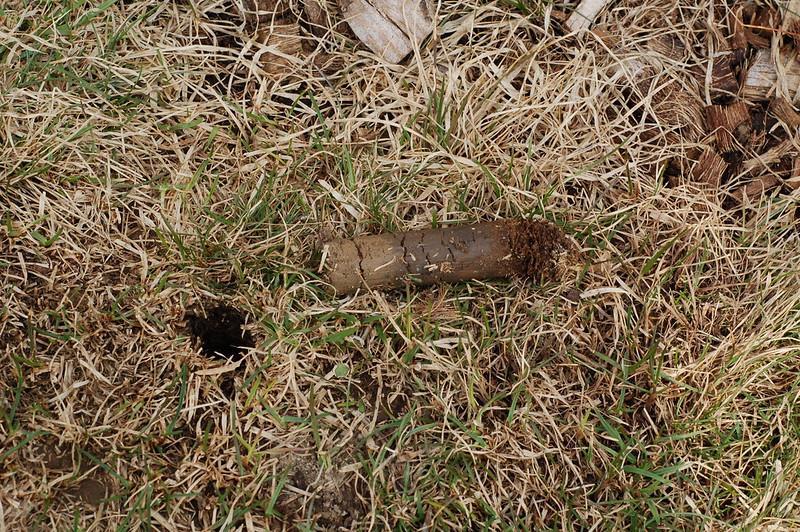
Lawn aeration creates tiny holes in the soil that enable water, air, and nutrients to penetrate.
If you want to overseed your lawn after aerating it, you should cut it fairly short before beginning these modifications. This will prevent the grass that is currently there from growing too tall too rapidly (and choking the newly germinating seeds).
Nevertheless, here is how to properly aerate your lawn:
Mark Objects In The Lawn
When aerating your lawn, it is important to use irrigation flags to mark any obstacles you may encounter. This will help you avoid costly repairs to your sprinklers, pipes, lawn aerator, and any other object you might run into.
Water Your Lawn
Before aeration, apply a one-inch layer of water to your lawn. Using a tuna can, you can gauge how much water is on the grass. Put the can down in the center of the grass, and turn off the water as soon as it is full.
Aerate The Lawn
Acquaint yourself with the capabilities and restrictions of your aeration machine. For example, some cover only a section of the lawn, so you may have to go over it more than once. At a minimum, go over your yard once, but ideally, you should do it twice, the second time at a cross angle.
Lawn areas near driveways, walkways and other high-traffic areas should always receive multiple passes from mowing equipment.
Water & Feed Your Lawn
After completing all the processes outlined above, the next step is to water the lawn thoroughly. Also, it would help if you let the clumps of soil that the aerator pulled out of the yard remain so they can decompose naturally. Following that, fertilize the lawn so that it receives the necessary nutrients to aid in its recovery.
Overseeding The Lawn After Aeration
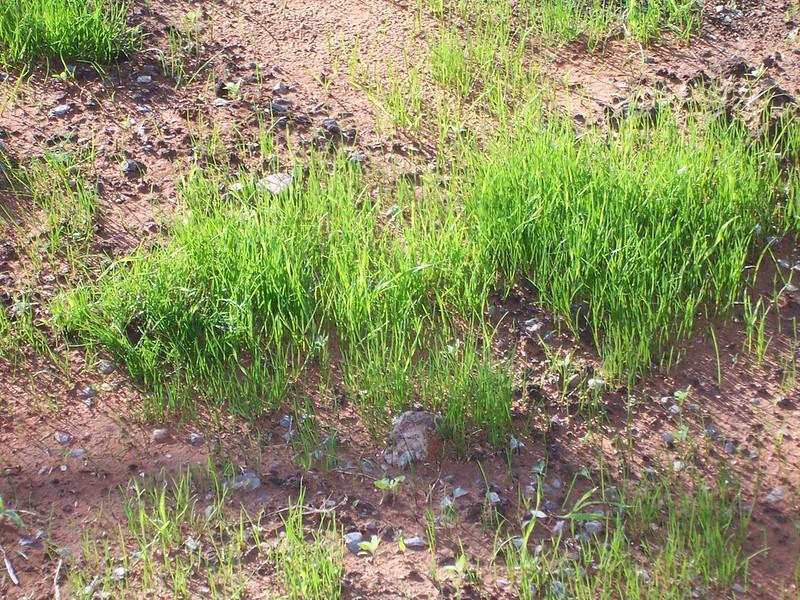
In the drier months, overseeding helps grass maintain its green color longer.
When it comes to overseeding, it is essential to select the appropriate seed. To begin, survey your lawn and identify the many kinds of grass already there. In addition, you will need to examine what you use the lawn for, the orientation of the garden, whether or not the soil drains effectively, and the overall appearance you are going for.
Overseeding is an essential component of standard lawn maintenance for many households. However, what exactly does it mean to “overseed,” and why isn’t this activity on the lawn called “seeding”? Well, t “Overseeding” is the word used to describe the process of putting additional grass seed into a yard without turning the topsoil.
Things You Will Need For Overseeding
- Dethatcher/power rake/verticutter (optional)
- Enriched topsoil
- Fertilizer spreader
- Grass seed
- Lawn mower
- Lawn starter fertilizer
- Rake
Note: Before you plant new seeds, your lawn may need to be dethatched or aerated if it has thatch on it. If not removed, the overseeding grass seed won’t get to the soil where it can grow and establish itself.
Mow & Rake The Lawn
Trim your grass to a length of no more than an inch on the day you intend to overseed your lawn. The fresh seeds have easier access to the earth below when the grass is cut shorter. After you have mowed your lawn, go back over it with a rake to remove any grass clippings or other material that could come in the way of seeds.
It is also essential to ensure that the rake penetrates the ground a bit deep so that it can break up the top layer of soil as you work.
Amend The Soil
Conducting a soil test is the best way to determine what amendments if any, are required for a lawn that is not growing and greening as it should. In general, add a thin layer of enriched soil over the existing grass, no more than one-quarter of an inch thick, and gently rake it in to give a healthy environment for the new seeds to settle into.
Spread The Seeds
Spread seed by hand or using a handheld spreader in smaller areas. A broadcast spreader should be used for more extensive areas to ensure that all regions receive the appropriate quantity of seed. Pick a grass seed explicitly developed for the climate or region you live in and pick one that will blend well with the grass already there.
Feed The Grass
Note: Omit this step if your seed mixture already contains fertilizer.
Spread a lawn starter fertilizer wherever you recently added seed using the spreader. Starter fertilizers are manufactured specifically for use on newly seeded grass. They make it easier for the seedlings to grow deep roots and sprout more quickly. When selecting a fertilizer, it is crucial to steer clear of “weed and feed” combos. It is because they contain herbicides and prevent fresh grass from sprouting.
Water The Lawn
Following overseeding, fresh seeds need regular watering. Keep an eye on them and make sure they don’t get too dry. It would help if you began by giving the grass a couple of light waterings daily for the first several weeks.
After the seeds have germinated, you can begin to water your lawn fewer times over a more extended period of time. This will allow the grass to develop deeper roots.
Common Aeration & Overseeding Mistakes
When aerating and overseeding their turf, those who are new to lawn management may find that they face some challenges. In most cases, difficulties develop as a result of simple errors. So, in order to get the thick and healthy appearance you desire, be sure to steer clear of the following aeration and overseeding mistakes:
Using Wrong Equipment
Your results will mostly depend on the quality of the tools you use. Using inexpensive substitutes, like pitchforks or purchasing cleats with spikes on the bottom, is a common mistake that many people make.
Unfortunately, both of these fall short in their respective tasks and can potentially worsen the soil’s condition by further compacting it. So, rent a core aerator for four hours or a whole day to do yourself a favor.
Mowing Too Soon
After you have planted your seedlings, they will not be able to mature unless they have been given sufficient time and the appropriate environmental conditions. They will need some time to adapt and establish roots before the first mow. This time period differs from place to place and is also dependent on the variety of grass that was seeded. So, avoid mowing your lawn for a few weeks after overseeding your yard.
Not Following Correct Seeding Rate
The seeding rate will be printed on the package when you buy seeds. This informs you of the quantity of seed your lawn needs and is not merely a suggestion. Due to my love of highly dense lawns, I often apply around 1.25 times the advised overseeding rate. Nevertheless, follow the manufacturer’s guidelines if you want a decent result.
Applying Weed Control Too Early
On a healthy turf, weed treatment can work wonders to keep invasive plants at bay, but the chemicals and herbicides used to control the weeds can also cause significant damage to the new grass and seeds.
Even organic and natural treatments can create stress on young plants. So, we recommend waiting for four to five mowings before attacking any sprouting weeds.
Doing It At The Wrong Time
The best time to aerate is when new growth has the most chance of flourishing in your area. Aerating & overseeding the lawn either too soon or too late could be detrimental to the lawn’s health. For instance, if you overseed later than you should have in the fall or spring, it will cause problems for seeds, especially if there is a harsh winter or a hot summer ahead.
Not Following A Proper Lawn Care Plan
It might not seem like a big deal, but you’d be astonished to learn how many people go through the trouble of aerating & overseeding but fail to keep up with the necessary maintenance.
Unfortunately, the seeds you sowed do not have any magical properties. I mean that you will need to stick to a proper lawn care plan following aerating and overseeding your lawn.
Performing These Tasks In Dry Conditions
The time immediately following a significant rainfall is ideal for aerating the soil and overseeding the area. Rain assists in moistening the soil, which in turn assists the machinery in accurately and deeply opening up the soil for overseeding.
It is more difficult for water and nutrients to permeate soil that has become overly dry and compacted, particularly during periods of drought when the grass is already under stress.
Conclusion
So, as we’ve established, the main answer to your query is Yes! Aeration and overseeding do work. These two practices are essential to growing a healthy lawn. If you put the advice from up above to use, you will notice that your yard quickly becomes the envy of your neighbors.
Also, remember that you always have the option to get assistance from professionals if you discover that the task at hand is either too time-consuming or too difficult for you.
Frequently Asked Questions
Do you seed before or after aerating?
If applied shortly after aeration, the seed, fertilizer, and water will have the best opportunity of penetrating the holes created by the aerator. For instance, spreading grass seed after aerating a lawn improves its contact with soil, thus, increasing seed germination.
Do you need topsoil when overseeding?
Generally, it is wise to utilize topsoil when overseeding a lawn. However, compost offers more benefits to the process of overseeding than the topsoil. So, if you have a choice between the two, the best option for your top dressing would be compost.
Should I pick up plugs after aerating?
Lawn aeration services and lawn care specialists typically advise against picking up the plugs following aeration. These tiny bits of the soil should decompose and disappear within a few days. This process is also facilitated by deeply soaking the grass after aeration or delaying aeration until it is about to rain.
Can I just throw grass seed down on the existing lawn?
It is possible to plant new grass seeds directly on top of your existing lawn. However, if you take the time to prepare your lawn first, you will enhance the likelihood of seed germination and improve the quality of the finished product.
When can I mow after overseeding?
As a general rule, you should wait anywhere from two to four weeks before cutting the grass after overseeding your lawn. This is because when you mow the grass too soon after overseeding, you stunt its growth and might even kill the seeds.
Sources for Further Reading
Lawn Aeration and Overseeding – University of Illinois Extension Service
Core aeration and dethatching of lawns – Michigan State University Extension Service
Yard and Garden: Properly Aerating Lawns – Iowa State University Extension & Outreach
Editor’s Recommendations
Lawn Sprinkler Types | How To Choose The Best Sprinkler For Your Lawn!
Help! My Lawn Mower Pull Cord Is Not Catching | Here Is How To Fix It Fast!
What Is The Best Mowing Season, Height & Frequency For Bermuda Grass?







